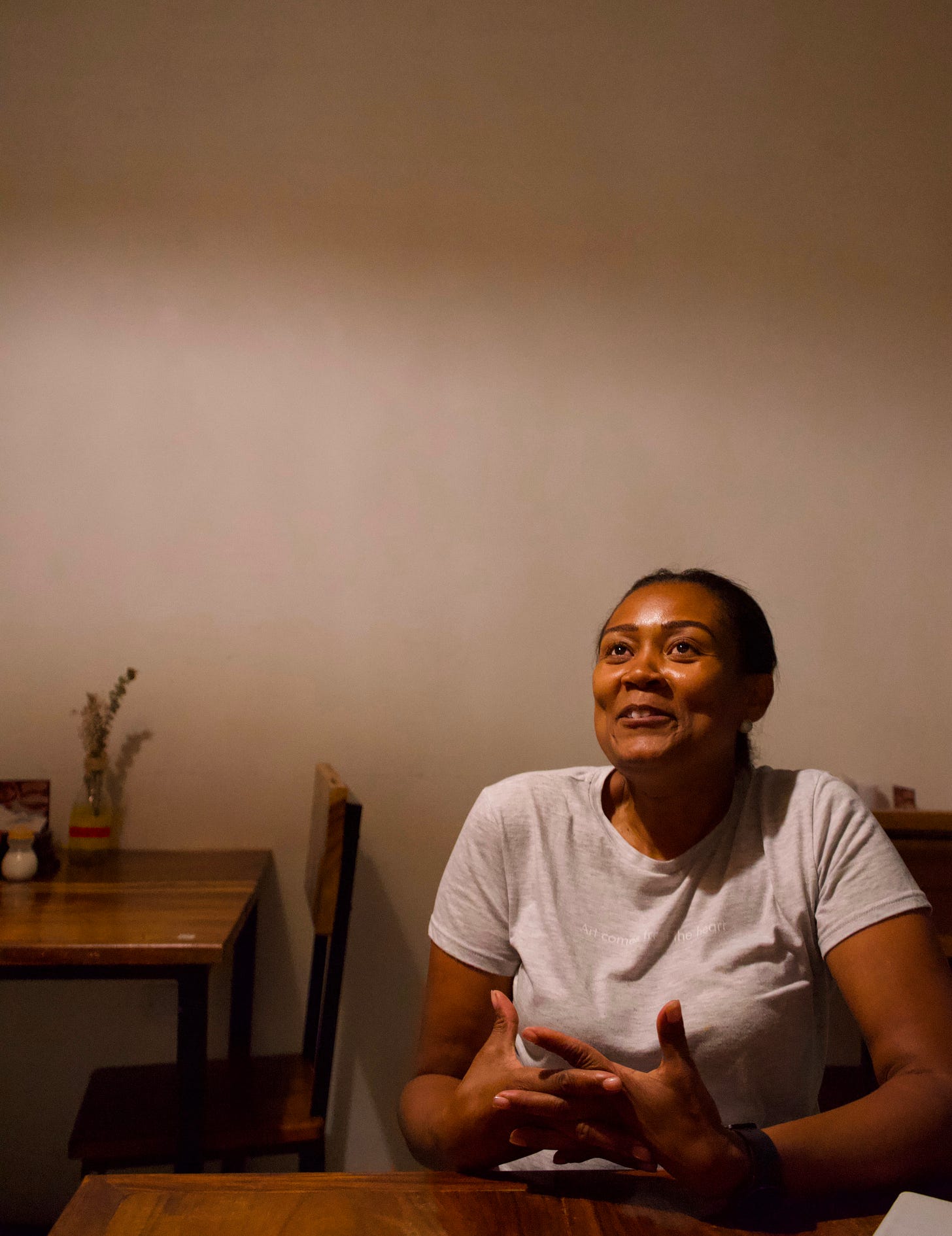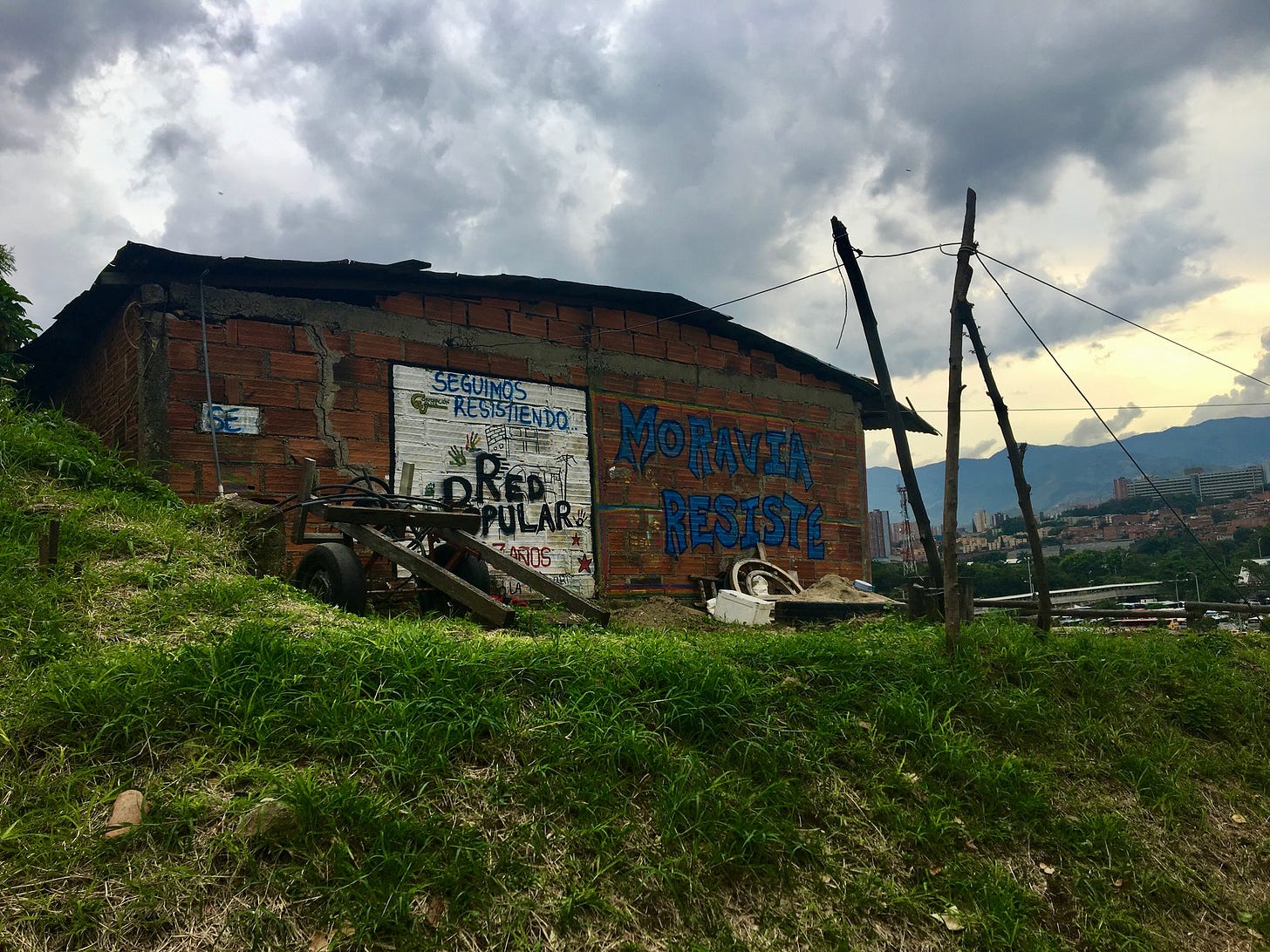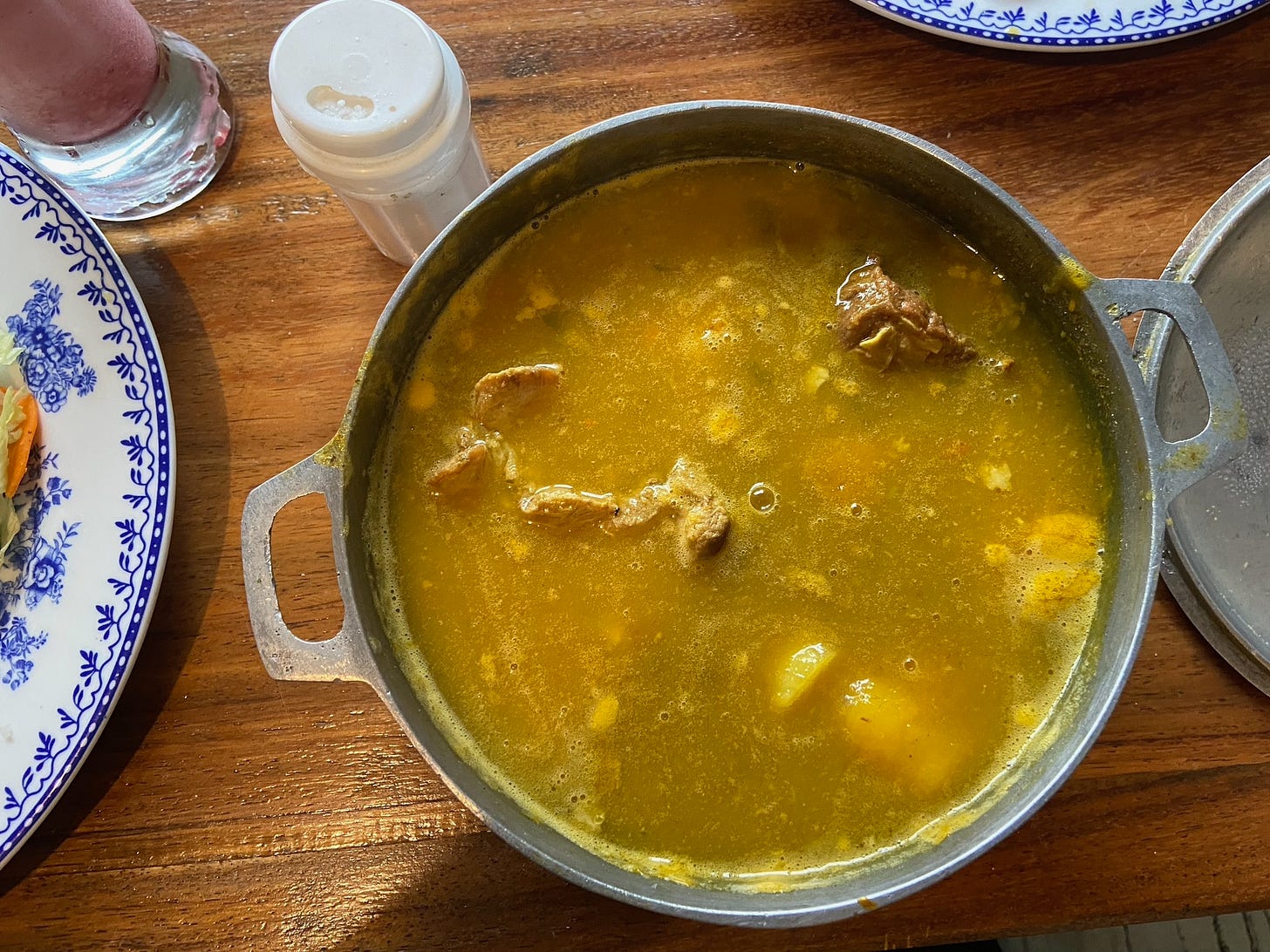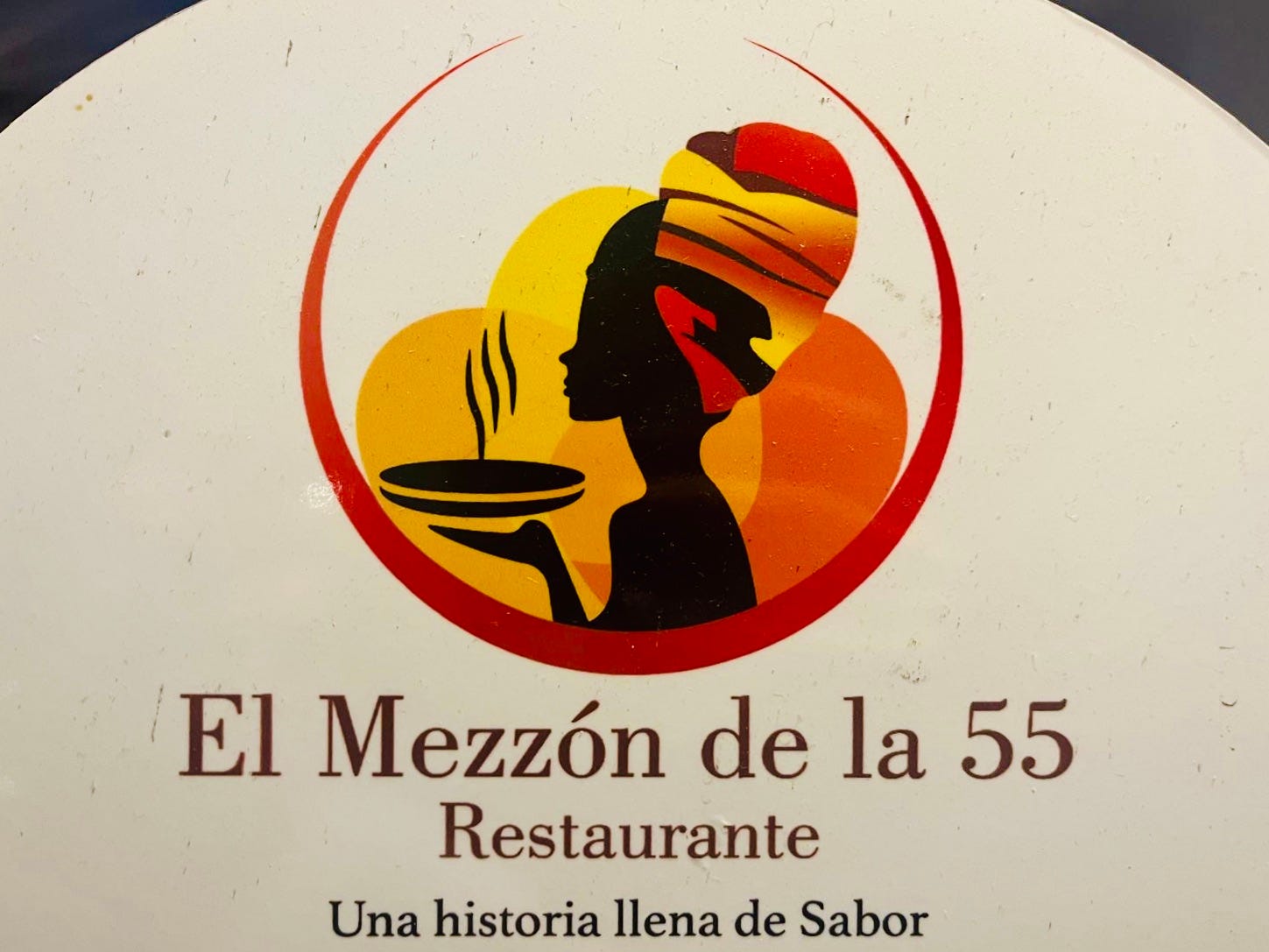Esperanza Murillo: "Two ingredients - salt, garlic, and lots of love"
This interview is part of our “In Their Own Words” series. It has been translated and edited for clarity and readability - nothing else.
Esperanza is a Colombian restaurateur. With a lot of encouragement and ingenuity from her then-teenage daughter Angélica, she founded El Mezzón de la 55. When she opened her restaurant, Esperanza’s goal was to support her young family. Today, she sees the restaurant as a part of the community and strives to help single mothers striving to earn a living without missing their kids growing up.
We used to have lunch weekly in El Mezzón de la 55’s second location and spoke to her there after closing one night.
In her own words:
My name is María Esperanza Murillo. My restaurant, El Mezzón De La 55, has been around since 2007.
I had just had my second child and didn’t have a job. My older daughter, Angélica, who was about to turn 14, said to me, “Mom, you cook well. Don’t go back to cleaning homes. Instead, let’s sell hot dogs and hamburgers in Moravia.
Moravia is a neighborhood in northern Medellín. It used to be a garbage dump, but people eventually built homes there. It’s a place full of resilience, having lived through violence, but now it’s peaceful and bustling with commerce.
So we went to check out Moravia and saw a business named “El Mezzón De La 55.”
Angélica said, “Mom, look! That restaurant is for sale! And it has a small room — we could put my little brother there to sleep. You cook, and I’ll help with customers.”
It really struck me. I thought, “A 13-year-old girl with such vision! Already thinking about how she’ll help...”
But I told her, “No, Angélica. You need to study, not work!” She insisted, “Mom, I finish school at noon. I’ll change and come help.”
We called about the restaurant, which was selling for 30 million pesos. I told Angélica “Negrita, we don’t have that kind of money.” But she said, “Mom, it’s perfect for us.
So, I called the owner, Don Ferney. He came for dinner with his wife, Doña Mónica. When they were done eating, I said “I’m interested in your business. Would you sell it to me for 15 million pesos?”
Immediately he said, "Of course, mija1." But Doña Mónica protested: "Are you crazy? You can’t just give the business away?"
"Yes, I can,” he said. “I'll sell it to her for 15 million." Before his wife could say anything more, I added, "Could you also co-sign a loan for me at the bank?"
“Of course,” he said. “I’ll help.”Doña Mónica was furious: "How can you even consider that? You barely know these people!"
But he did just that.
That Friday, Doña Mónica called me to the restaurant so I could see how it worked. I left Daniel with Angélica and got to the restaurant around 10 or 11 in the morning. By 1 or 2:30, customers started coming in and we sold sancocho2, bean soup, and mondongo.3
As we were leaving Doña Mónica looked at me and said, “Take the keys. Starting tomorrow, the restaurant is yours.
What excitement! I ran home and called my mom, “Mom, we have a restaurant!”
So, we got to work.
That first day we bought a pound of meat and made pasta soup because that’s what stretches the furthest.
When Angélica got back from school, she asked, “Mom, did you sell anything yet?”
“No,” I told her. “Not a single person has come in.”
“Mom, that won’t work,” she said. “Wait, I’ll go to the stationery store, buy a poster board, and put up a sign that says ‘New Management.’ You’ll see—people will come running.”
“Alright,” I said, “but don’t make it too colorful, or people will think we’re a daycare.”
“Whatever Mom,” she replied. “I’ll make sure it gets attention.” So she put up the sign and people noticed: “Oh, look! A negrita is running it now! Oh man, black people cook with flavor! Let’s try it.”
That day, we made 80,000 pesos and Angélica told me, “Mom, use that money to buy fish. Tomorrow, I’ll put up another sign that says ‘Fish for Sale.’”
I said, “Angélica, please don’t! People will definitely think it’s a daycare!”
But she did, putting it up as soon as she got home from school. And with that, things really took off. People said, “Oh, they’re selling fish in Moravia! No way! Black people make such delicious fish—let’s go!”
That was Tuesday. By Wednesday, I had to call my sister and ask her to come work with us. It was my mom, my sister in the kitchen, and me on the side because I had to watch Daniel to make sure he didn’t hurt himself. I also helped Angélica with customers. I juggled being a babysitter, a waitress, and a dishwasher.
By Saturday, we had to call a niece because we couldn’t keep up with the demand.
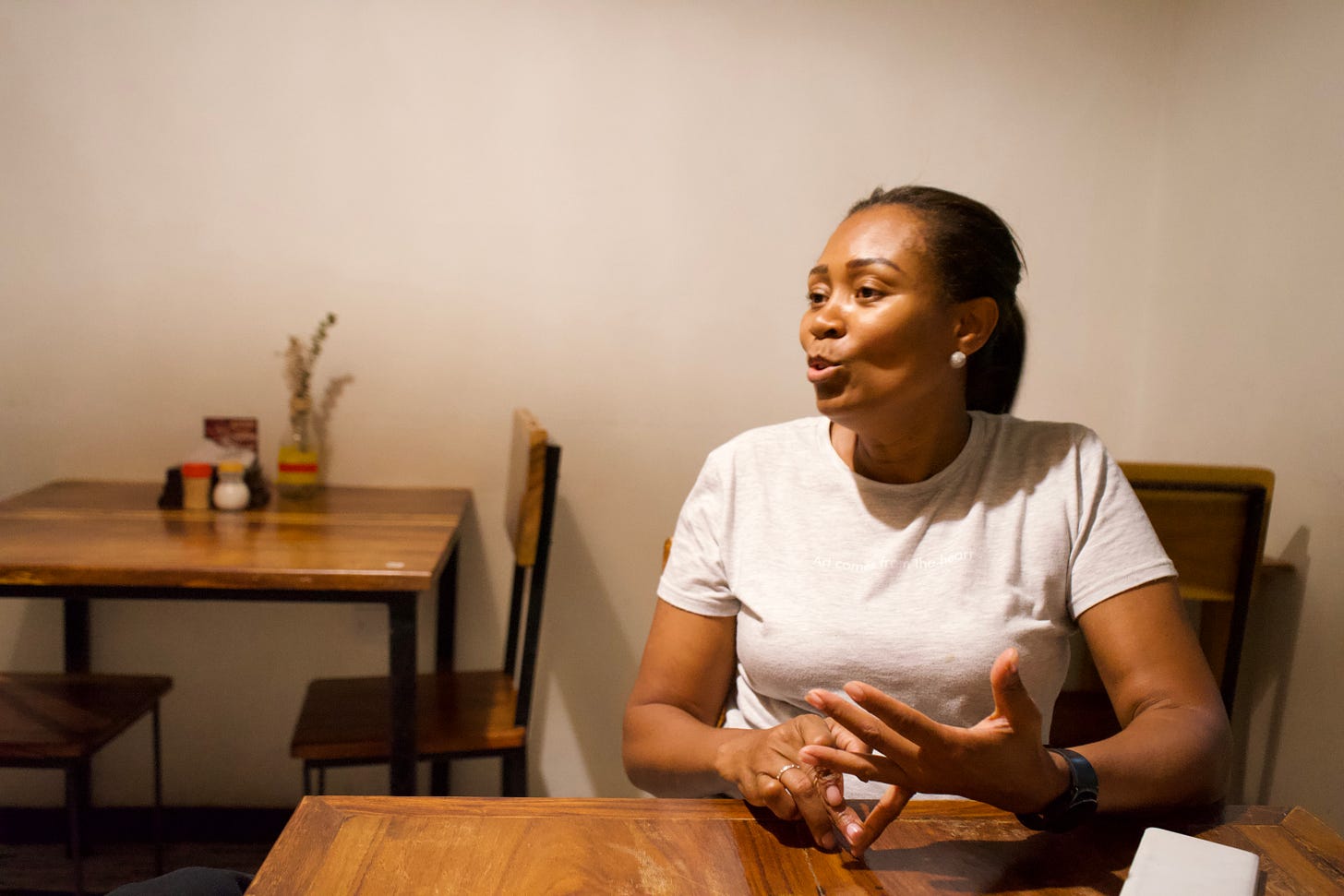
It just exploded. We had people lining up to get in – practically standing in the street. We moved locations and went from four tables to 29. We stayed in the new place seven and a half years. Then, moved again.
That’s when Tulio [a famous Colombian food influencer] came along and named our sancocho the best in Antioquia.
The effect was extraordinary. Before, people would ask, “Esperanza, what’s on the menu for today? Sancocho? Nah, I can make that at home.”
But after Tulio’s praise, we went from serving 20 bowls of sancocho to, on one Sunday, 600. We didn’t have enough room for everyone—neighbors lent us tables and chairs. Moravia was in a frenzy.
All that was three weeks before the pandemic hit.
We closed, but Tulio called: "Esperanza, you can't close! What I did for you is a huge opportunity.” So, we started doing deliveries. On the first day, we had eight motorcycles and still couldn’t keep up. So Tulio asked me where the most orders were coming from, “Find an affordable location there. Once you’re set-up, let me know.”
When we opened our location in the South, Tulio promoted it. We were lucky. While so many people had to close their businesses during the pandemic, we grew.
Today much of the family works here – my brother, sister, son, daughter, and I. And, of course, the staff – they’re adopted family.
Angélica finished her studies and now handles the administrative side of the business. Thank God, because I’m completely self-taught. I had no idea how to do any of this.
Daniel is 17 now. He grew up here – he’s been in the restaurant since he was 8 months old. He gave us the push to start this business. This venture was born out of the need to have him close by, to make sure he got an education, to help him with his homework.
People often start businesses out of necessity, because they don’t know how else to feed their kids or support their family. That’s when you take the risk and awaken that dormant skill inside you.
I’m extremely shy. This restaurant has forced me to speak. In the beginning, I’d try to serve a customer and I couldn’t. I’d retreat. But Angélica would say, “Mom, you have to go out. Otherwise, how are we going to make it?”
Now, every time that door opens and someone walks in, I feel grateful. To know that on weekends, I’ll have a full house with families coming together to eat—it’s a tremendous blessing.
These days, our cuisine is fusion. It’s Chocó-Paisa.4 We’re Chocó-Paisa. My siblings and I are from Chocó, but our children were born here. So we combine the Chocó and Paisa flavors.
We grew up watching my mom make food from the Pacific region: fish soup, sancocho, or rice with sardines. That’s where the cuisine comes from—home. And people think because we’re black, all we do is seafood, but we also sell cazuela de frijoles,5 bandeja paisa,6 and even ajiaco7 — and we do it well.
Cooking – it’s a passion. My mom always said, “Mija, food only needs two ingredients: salt, garlic, and lots of love. That’s all you need!” I’d laugh, “Mom, that’s three!”
But she’s right. Cooking is my joy. I get home and my kids ask, “Mom, what are we going to eat? And I go right into the kitchen, singing and happy, cooking.
My dream is to start a foundation for single mothers. Because we’re all single moms here. And, after 4 pm, your mind isn’t at ease — you’re thinking about your kids: “Where are they? How are they? Have they eaten?” It’s tough coming home after a stressful day to unfinished homework. When you’re tired, you don’t have the energy to put on a smile and do it with them.
So, for a long time, I’ve dreamed of having a house nearby where we can leave the kids with tutors to teach them and help them. That’s the dream.
Mija is a Colombian term of endearment that translates to “my daughter” but means something like “sweetheart.”
Sancocho - a traditional Colombian stew made with meat or fish, yuca, potatoes, and vegetables. It’s delicious.
Mondongo - another traditional Colombian stew. This one made with tripe, aka pig stomach. Colombians swear it’s good for a hangover.
Chocó is a Colombian department on the Pacific coast with a distinct Afro-Caribbean cuisine. Paisa is slang for Colombians from the department of Antioquia, of which Medellin is the capital, known for its rich meat-heavy dishes.
Cazuela de frijoles - a traditional dish from Antioquia (so a ‘paisa’ dish) which mixes red beans, fried pork rind (known as chicharrón), fried plantains, and avocado.
Bandeja Paisa - literally, a “Paisa” plate, which comes with generous portions of two types of sausage, ground beef, fried pork rind, rice, red beans, plantain, and more.
Ajíaco - a dish popular in the mountains around Colombia’s capital, Bogotá. It’s made with three different types of potatoes, chicken, and egg.




